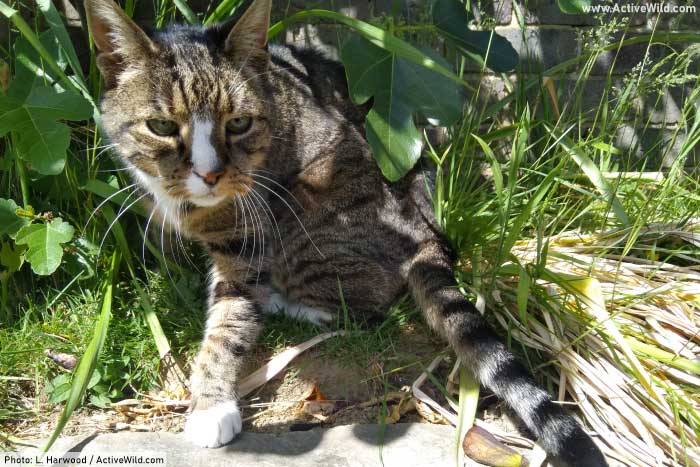
A recent study has found that the structure of a cat’s nose improves its sense of smell.
How The Structure Of A Cat’s Nose Improves Its Sense Of Smell
Smell plays a major part in a cat’s life. Cats rely on their ability to sense odor for hunting, territory recognition, social interaction and determining the freshness of food.

You can see pictures and facts on EVERY species in the cat family on this page: Cat Species List with Pictures & Facts
A recent study, entitled “Domestic cat nose functions as a highly efficient coiled parallel gas chromatograph” investigated the structure of a domestic cat’s nose. (source)
In the study, researchers constructed an anatomically-accurate computer model of a cat’s nasal cavity. This model based on a microCT scan of a real cat’s skull.
A MicroCT scan, or Micro-Computed Tomography scan, is a type of imaging technique. Imagine it as a highly-detailed X-ray that’s capable of showing things in 3D.
Using this computer model, the researchers were able to analyse how air flows inside a cat’s nose.
Like most other terrestrial mammals, cats have three sets of “turbinates” – bone structures in the breathing passage that serve to channel air as the animal breathes. The hind-most turbinates are where most of the odor-sensing takes place.
A cat’s turbinates are considerably more complex than those of both a human and of a rodent.
The area of a cat’s nose in which odors are sensed is around 4 to 5 times that found in a human nose.

The researchers found that air flowing through a cat’s nasal cavity is directed into two streams. The majority of the air goes to respiratory regions of the nose – here the air is conditioned and filtered ready for entry to the lungs.
A secondary stream, however, is “fast-tracked” via a central passage into the olfactory region of the nasal channel – the part of a cat’s nose that senses smell. This means that a cat is quickly able to sense odors, but that the respiratory function of the nose is unimpaired.
The researchers likened the operation of a cat’s nasal passage to that of a “parallel coiled gas chromatograph” – an instrument that enables separation of gases.
The twisted, maze-like channels in a cat’s nose – far more complex than those in a human nose – have evolved to maximize the cat’s ability to sense odors in the cramped environment of a skull.
The complex structure is over 100 times as efficient as an amphibian-like straight channel would be in the same space.
It seems that the trial and error nature of evolution has provided the ideal balance between the volume of air that passes through the odor-sensing areas of the nose, the time it takes for air to reach those parts, the time in which the air is processed, and the actual physical space available for odor-sensing.
Details of the study can be found here: Domestic cat nose functions as a highly efficient coiled parallel gas chromatograph
You can find out more about cats on this page: Cat Facts
Why Is The Sense Of Smell Important To A Cat?

A cat’s sense of smell is vital to its survival and daily functioning, serving multiple roles that shape its interaction with the environment.
Having a good sense of smell helps cats identify food, determine its freshness, and detect potential toxins or dangers, reducing the risk of ingesting harmful substances.
It’s said that a cat with a blocked-up nose will stop eating because it can’t smell its food.
The sense of smell plays a crucial role in felid social communication, with cats able to pick up scent markings left by others, providing information about the marking cat’s identity, sexual status, and territorial boundaries. This olfactory communication can help prevent confrontations and conflicts.
The ability to recognize familiar scents provides comfort and contributes to a cat’s sense of security, making this sense integral to its emotional well-being.
For wild cats, an acute sense of smell is vitally important in hunting, helping them to locate and track prey.
Discover More With Active Wild
Discover more about the animal kingdom: Animals – The Complete Guide
The post New Research Finds Cats’ Noses Designed For Maximum Efficiency appeared first on Active Wild.